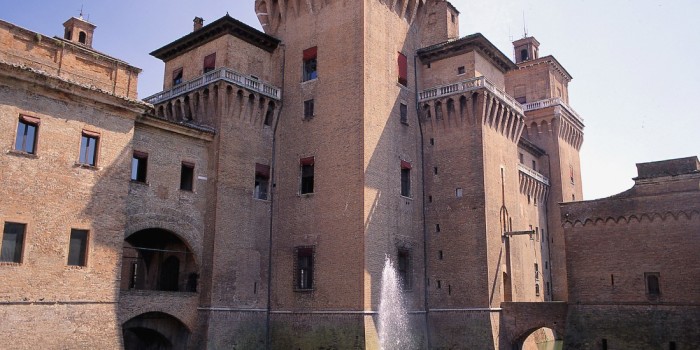Ferrara Unesco World Heritage City
The first mention of Ferrara is at around 657 BC.
Initially governed by the Canossa family, Ferrara later became a free Commune, reaching the height of its splendour during the rule of the House of Este, which, thanks to Ercole I d’ Este in particular, called upon important scholars and artists to turn Ferrara into one of the most active cities of the Italian Renaissance.
After firstly falling under the Papal State at the end of the 16th century and then Napoleonic rule, Ferrara was the site of numerous uprisings after 1815 which culminated in the city being annexed to the Kingdom of Italy.
Ferrara city of the Renaissance
The centre of Ferrara, which has a vast wealth of monuments, is a gem of Renaissance art.
The Castello Estense, which was built in 1385, started out as a defensive fort but was later converted into a residence of court during the seigniory of Ercole I d’Este.
The San Giorgio Cathedral was built in 1135 and has been remade several times; indeed, its facade presents both Gothic and Romanesque elements. The church atrium leads to the Cathedral Museum entrance, where it is possible to admire numerous works of art, including the Madonna of the Pomegranate by Jacopo della Quercia.
The Palazzo dei Diamanti, with its characteristic diamond-pointed facade is an absolute masterpiece of Renaissance architecture and the seat of the National Picture Gallery.
The Sant’ Antonio in Polesine monastery which was founded by Beatrice II d’Este in 1249 and the evocative Corpus Domini church which holds the tombs of many members of the Estense nobility are also well worth a visit.
Ferrara city of the Estensi
Palazzo Schifanoia with its renowned Sala dei Mesi, where the Este family received and entertained guests, is one of the most important Estense monuments.
The Jewish ghetto dates back to around the mid-fifteenth century, with its dwelling places and synagogue which was built in 1481 which was once full of sacred furnishings and priceless books.
Ferrara is also rich in museums, such as the Filippo de Pisis Modern and Contemporary Art Museum, the Giovanni Boldini Natural History Museum and the National Picture Gallery at the Palazzo dei Diamanti.
Furthermore, Ferrara houses the important Museum to Italian Judaism and the Shoah.


